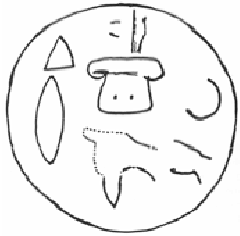Palaeography
Palaeography is the study of ancient and historical handwriting. The discipline involves deciphering, reading, and dating historical manuscripts and understanding the cultural context in which they were produced. Palaeography is an essential tool for historians, archaeologists, and philologists, as it helps to interpret and authenticate historical documents.
History[edit | edit source]
The origins of palaeography can be traced back to the Renaissance when scholars began to systematically study ancient texts. The term itself was coined in the 18th century by Bernard de Montfaucon, a French Benedictine monk and scholar. His work, Palaeographia Graeca, laid the foundation for the systematic study of Greek manuscripts.
Techniques[edit | edit source]
Palaeographers use various techniques to analyze manuscripts, including:
- **Script Analysis**: Identifying the style of handwriting used in a document, which can help date and locate its origin.
- **Material Analysis**: Examining the materials used, such as parchment, ink, and binding, to gather information about the manuscript's history.
- **Contextual Analysis**: Understanding the historical and cultural context in which the document was produced.
Types of Scripts[edit | edit source]
Different periods and regions have distinct styles of handwriting. Some of the major scripts studied in palaeography include:
- **Uncial Script**: A script commonly used from the 3rd to the 8th century AD, characterized by its rounded letters.
- **Carolingian Minuscule**: Developed during the reign of Charlemagne in the 8th and 9th centuries, this script is noted for its clarity and uniformity.
- **Gothic Script**: Used from the 12th to the 16th century, this script is known for its dense and angular letters.
- **Humanist Script**: Originating in the 14th century, this script was a revival of the Carolingian minuscule and influenced the development of modern typefaces.
Applications[edit | edit source]
Palaeography has several applications, including:
- **Historical Research**: Providing insights into the social, political, and economic conditions of past societies.
- **Textual Criticism**: Assisting in the reconstruction of original texts from fragmented or corrupted manuscripts.
- **Archival Work**: Helping archivists to catalog and preserve historical documents.
Challenges[edit | edit source]
Palaeographers face several challenges, such as:
- **Deterioration**: Manuscripts may be damaged or deteriorated, making them difficult to read.
- **Forgery**: Identifying and authenticating documents to avoid the use of forgeries in historical research.
- **Language Barriers**: Manuscripts may be written in obsolete or rare languages and scripts.
Related Pages[edit | edit source]
See Also[edit | edit source]
Search WikiMD
Ad.Tired of being Overweight? Try W8MD's physician weight loss program.
Semaglutide (Ozempic / Wegovy and Tirzepatide (Mounjaro / Zepbound) available.
Advertise on WikiMD
|
WikiMD's Wellness Encyclopedia |
| Let Food Be Thy Medicine Medicine Thy Food - Hippocrates |
Translate this page: - East Asian
中文,
日本,
한국어,
South Asian
हिन्दी,
தமிழ்,
తెలుగు,
Urdu,
ಕನ್ನಡ,
Southeast Asian
Indonesian,
Vietnamese,
Thai,
မြန်မာဘာသာ,
বাংলা
European
español,
Deutsch,
français,
Greek,
português do Brasil,
polski,
română,
русский,
Nederlands,
norsk,
svenska,
suomi,
Italian
Middle Eastern & African
عربى,
Turkish,
Persian,
Hebrew,
Afrikaans,
isiZulu,
Kiswahili,
Other
Bulgarian,
Hungarian,
Czech,
Swedish,
മലയാളം,
मराठी,
ਪੰਜਾਬੀ,
ગુજરાતી,
Portuguese,
Ukrainian
Medical Disclaimer: WikiMD is not a substitute for professional medical advice. The information on WikiMD is provided as an information resource only, may be incorrect, outdated or misleading, and is not to be used or relied on for any diagnostic or treatment purposes. Please consult your health care provider before making any healthcare decisions or for guidance about a specific medical condition. WikiMD expressly disclaims responsibility, and shall have no liability, for any damages, loss, injury, or liability whatsoever suffered as a result of your reliance on the information contained in this site. By visiting this site you agree to the foregoing terms and conditions, which may from time to time be changed or supplemented by WikiMD. If you do not agree to the foregoing terms and conditions, you should not enter or use this site. See full disclaimer.
Credits:Most images are courtesy of Wikimedia commons, and templates Wikipedia, licensed under CC BY SA or similar.
Contributors: Prab R. Tumpati, MD







